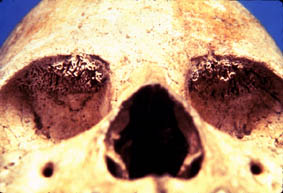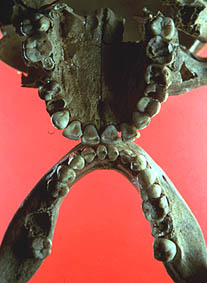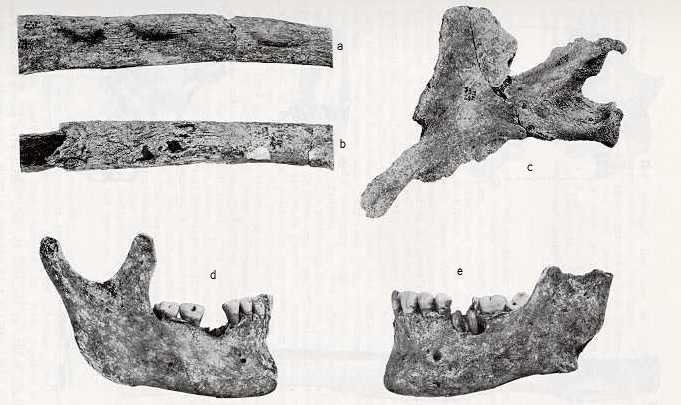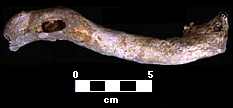
Cribra orbitalia, a porotic hyperostosis (porous bone growth) likely caused by iron deficiency.

Dental caries (cavities).

Examples of Mississippian paleopathologies from the East St. Louis quarry cemetery: a) left tibia with healed periostitis, b) left femur with suppurative osteomyelitis, c) right illium with a lesion, d) caries and aveolar resorption, e) caries and impacted molar.

Periostosis, an example of generalized infection likely brought on by some form of dietary stress or disease.
In addition to these and other ailments, population growth may be viewed as a potentially harmful result of maize agriculture. Although Cahokia never attained the population density of Old World urban populations which created conditions for diseases such as measles and smallpox, it was the most densly populated center in pre-Columbian America north of Mexico. Some paleopathologies observed on the skeletons of Mississippians can also be the by-product of infectious diseases, which of course are more readily transmitted in situations of higher population densities. Poor diet may be brought on by a host of factors, such as an increased competition for available resources. Moreover, there is no doubt that a poor diet, brought on either by an over reliance on carbohydrate-rich but protein-poor foods or a seasonal reduction in nutrition, increases an individual`s succeptibility to infectious disease.